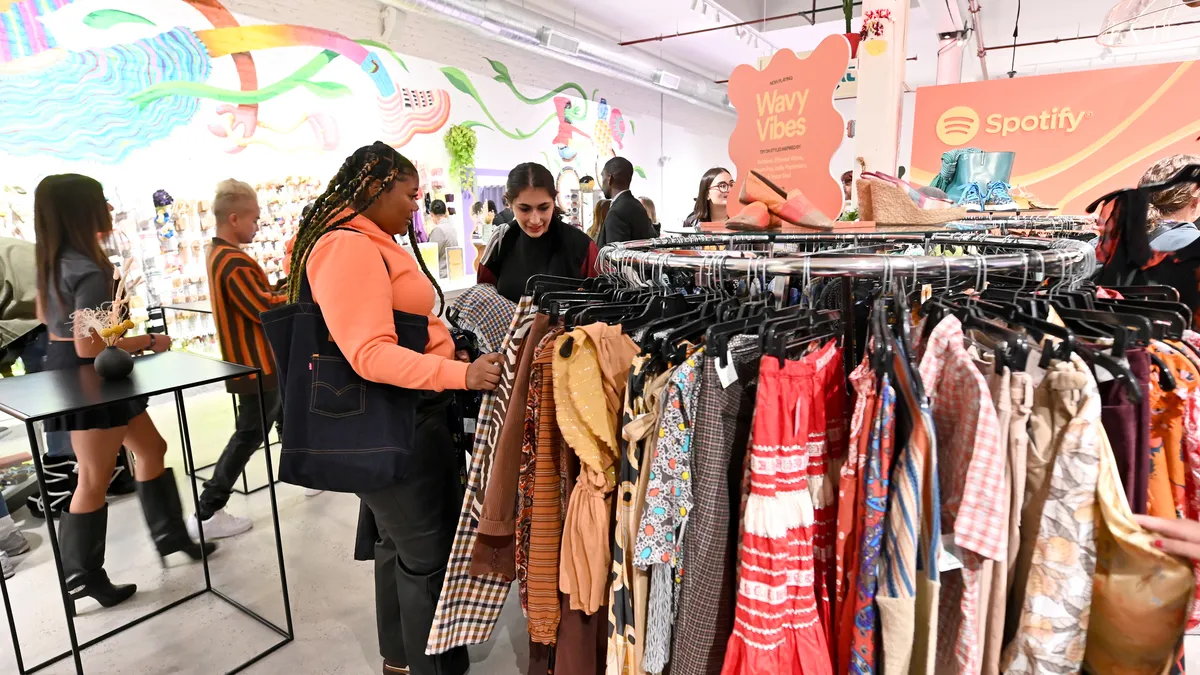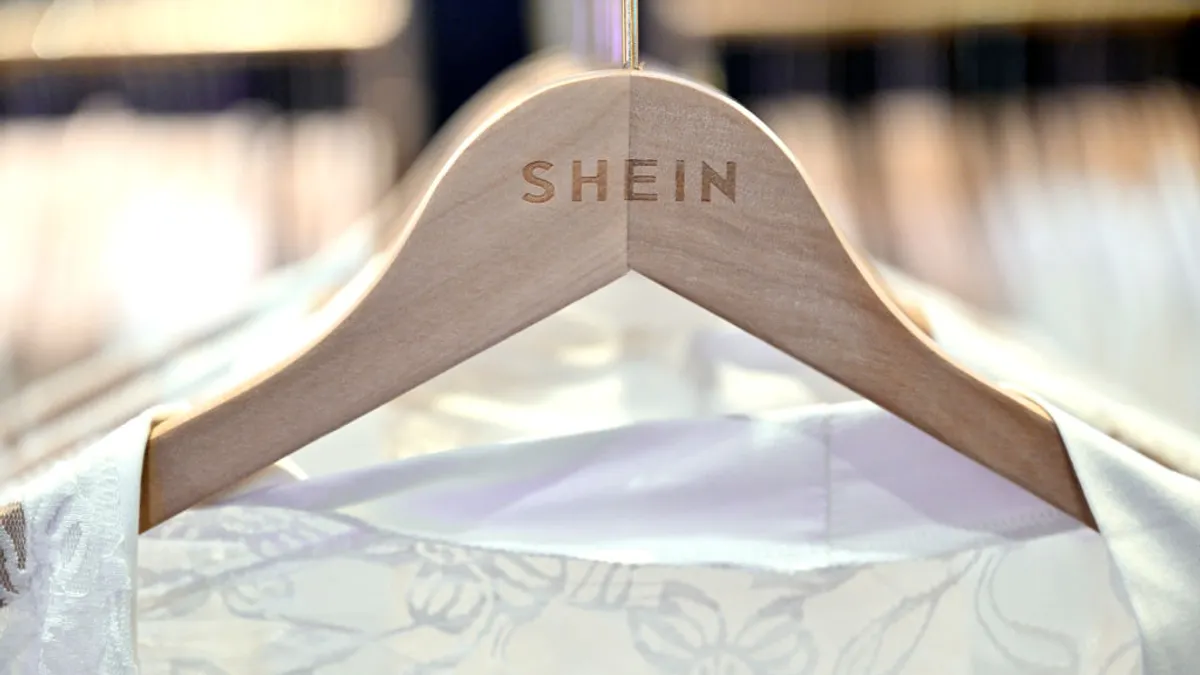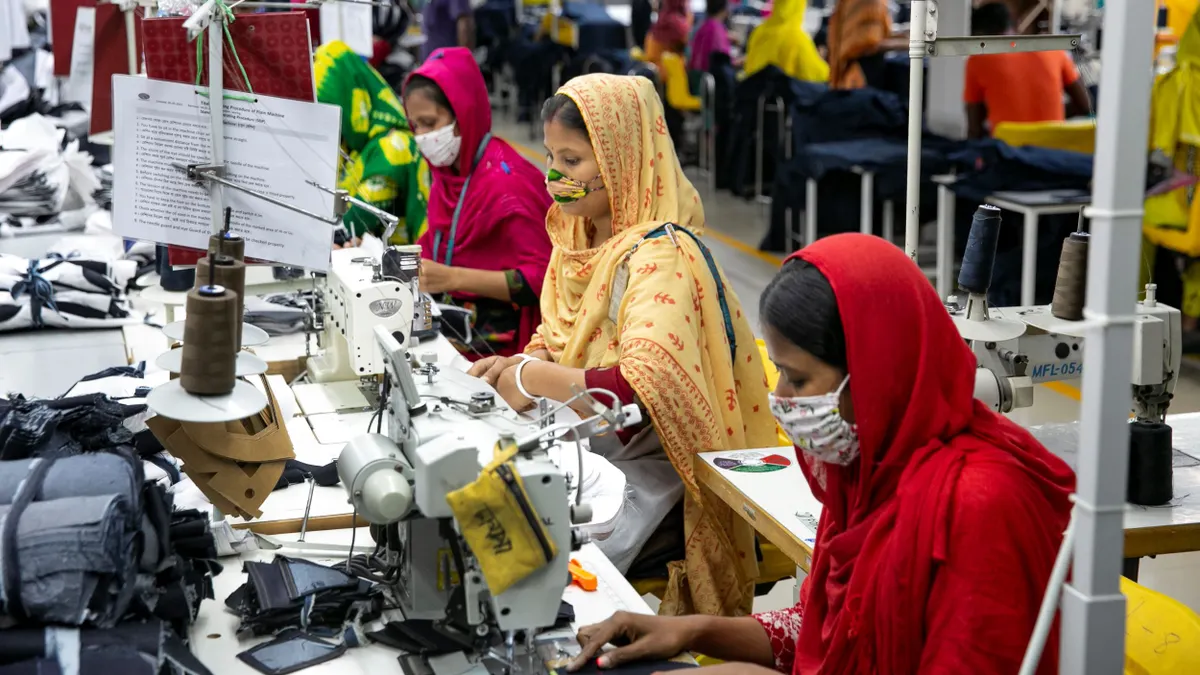Consumers say they want more environmentally friendly clothing, but will they pay for it?
Denise N. Green, an associate professor of fiber science and apparel design at Cornell University in Ithaca, New York, said the answer is often no.
“Gen Z — they say, study after study, survey after survey, more than any other generation — they’re saying they want sustainable fashion, and more than any other generation they are the biggest segment of the population buying fast fashion,” she said.
In 2022, a global sustainability study conducted by consulting firm Simon-Kucher & Partners found that younger generations in the U.S. are more inclined to care about sustainability. About 54% of Gen Z (ages 18-24) and 57% of millennials (ages 25-39) said sustainability is important to them.
Yet, those generations are the leading consumers of fast fashion. In ThredUp’s 2022 Gen Z Fast Fashion Report, 72% of college students reported having shopped fast fashion in the past year.
Green, who is the director of Cornell’s fashion and textile collection, said that while her students say sustainability is important, there are two main hurdles to putting their beliefs into action: affordability and strong social media influences.
Cost is the biggest driver
Shikha Jain, the head of Simon-Kucher & Partners Boston office, said one reason for the disconnect between consumer sentiment and purchasing behavior is affordability. The firm’s 2022 global sustainability study found that 33% of people believe sustainable alternatives are too expensive.
“If Gen Z does not have the kind of purchasing power they need, then they are going to trade-off between price and quality,” she said. “Sustainability is important, but price and quality are always going to be the most important value drivers.”
Yet when given a choice and enough information, Karla Martin, managing director of Deloitte’s fashion apparel and footwear practice, said that at the same price point, consumers do show some intent to be more sustainable.“When the information is easily available, they will opt for sustainable purchases,” she said.
When it comes to Gen Xers and baby boomers, there’s less of a disconnect between what they say they want and what they do, but that doesn’t mean they’re more sustainable. They’re just more honest about it.
In that Simon-Kucher & Partners study, only 45% of baby boomers (those born between 1946-1964) and 52% of Gen X (people born between 1965-1980), said they care about sustainability.
It seems they care a little less about sustainability, but Martin said, “[Their] sentiment is closer to actual purchasing behavior.”
Yet the differences are slight. In a Simon-Kutcher & Partners’ global sustainability study from the previous year, 33% millennials said they actively chose a sustainable alternative when available, while just under a third of the combined population of boomers and Gen Xers — between 24% to 29% — were likely to choose sustainable alternatives.
Jain said there was also only a slight difference when looking at incomes, with higher earners about 6% more likely to be sustainable than middle and lower income earners.
Social media matters
The high consumption of fast fashion among Gen Z consumers is driven by social media, said Martin. “If you look on social media, it’s like, click to buy this cute $15 dress,” she said. “That may be affordable and it’s easy to come by. It’s probably not the most sustainably made garment that you are going to get.”
Instagram and TikTok are littered with influencers, modeling the latest trendy clothes, from the $20 maxi dress on Amazon to the $15 shorts from Shein. With a few quick taps, apparel can be in a cart, ready for checkout. And once a consumer purchases once, sponsored content gets more targeted and tempting.
“If Gen Z does not have the kind of purchasing power they need, then they are going to trade-off between price and quality. Sustainability is important, but price and quality are always going to be the most important value drivers.”

Shikha Jain
Partner, Simon-Kucher & Partners
ThredUp’s report said Gen Z can’t resist fast fashion, “despite their sustainable values.” About 1 in 3 members of Gen Z said they felt addicted to fast fashion, and 45% of college students said it's “hard to resist the temptation that fast fashion offers.”
The ThredUp study also found that Gen Z’s fast fashion consumption is influenced by social media pressures. It reported that nearly 40% of college students browsed fast fashion sites once a day or more, while 50% watched weekly fast fashion hauls, where influencers purchase a large amount of clothes to try on for their followers.
Thrifting counts
While Gen Z’s intentions may not always reflect, their purchases, some of their habits can help extend the life of a garment.
Green’s definition of sustainable fashion includes methods that increase the wearability of garments or showing “our garments respect,” she said, from learning how to mend clothes to donating them. She said Gen Z is already doing a lot of this.
“When I think about Gen Z, in a sense I am being a little bit reductive because I am saying, ‘Well they’re consuming fast fashion but they’re also saying they want to be sustainable,’” she said. “On the other hand, they are also doing the things that I think are actually what sustainable fashion is.”
For example, Green said thrifting is prominent at Cornell, and clothing swaps between students are frequent on the campus. Also, in 2017, Cornell Thrift, an on-campus thrift store opened.
According to OfferUp’s 2022 Recommerce Report, the recommerce industry grew nearly 15% in 2021, which is the highest rate of growth in the history of the industry. The study said this increase was “driven by consumers interested in sustainable shopping and side hustles.”
Yet there’s still a generational divide. Older generations, said Martin, are more likely to donate and recycle, but less likely to buy thrifted clothing.
According to Statista, 42% of Gen Zers and millennials are willing to buy secondhand clothes versus 32% of Gen Xers and only 16% of boomers.
Sustainability’s future consumers
While Gen Z beliefs might not match their shopping habits yet, in several years, when they have more disposable income, Jain said sustainability will be “a table stake” for fashion companies.
“Younger generations do care about sustainability but they also have limited purchasing power,” she said. “That’s why they will sometimes have to trade off and think about what they can afford versus buying the sustainable alternative.”
However, Jain said that as younger consumers gain purchasing power, they’re more likely to buy sustainable goods. That means that if companies want to have a relevant business model, they should be planning for that now. “If they’re not,” she said, “they are already behind the curve.”


















